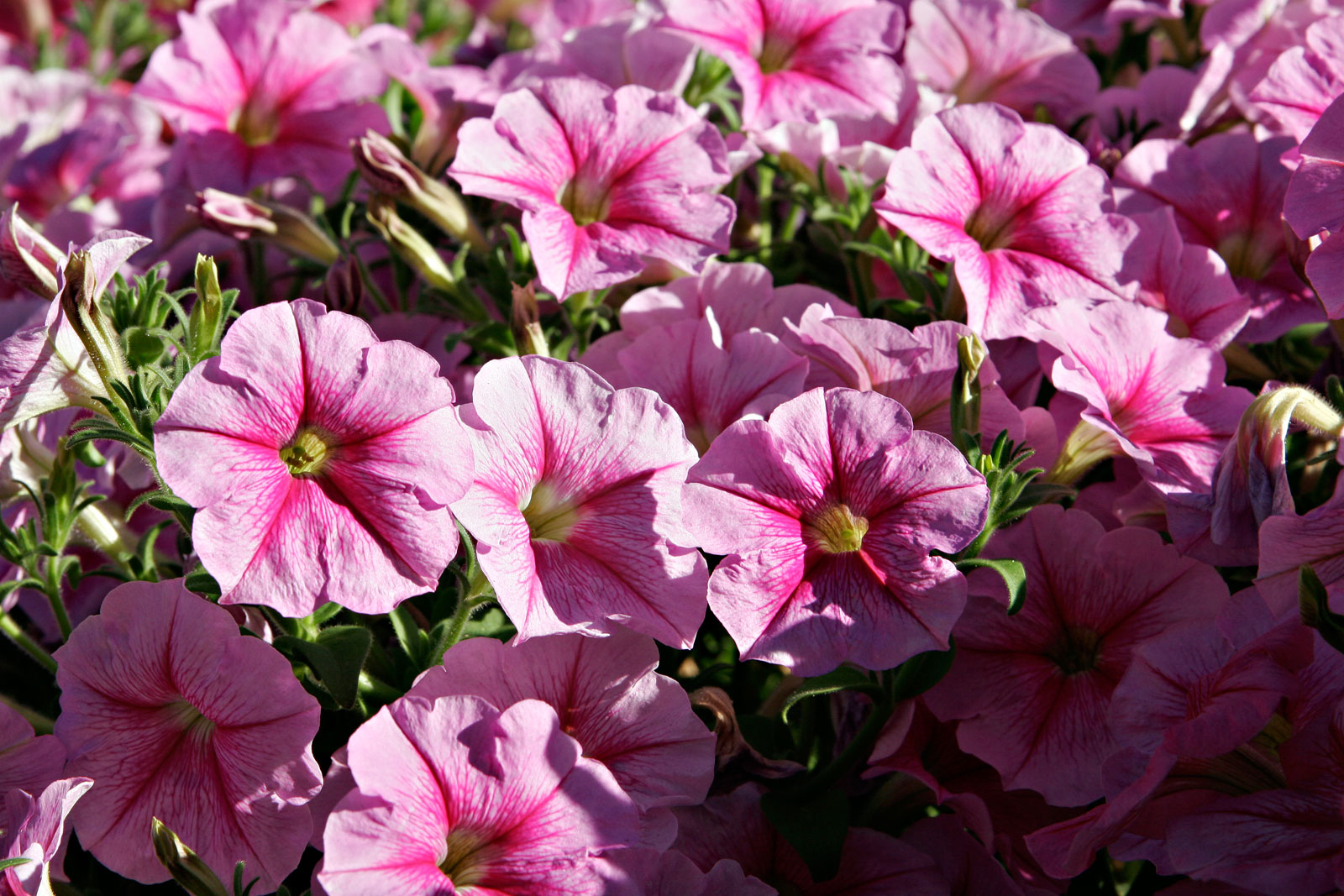No summer garden feels complete without the cheerful, cascading blooms of the petunia. Beloved for their ease of care, prolific flowering, and vast range of colors, petunias are a staple of window boxes, hanging baskets, borders, and sunny beds alike. Their trumpet-shaped flowers and pleasant fragrance bring brightness to even the most modest of garden spaces.
Though humble in nature, petunias possess an enduring charm and adaptability that make them a favorite among both novice and seasoned gardeners. Allow me to offer guidance on nurturing this spirited bloom into its fullest expression.

Portrait of the Petunia
Petunias belong to the Solanaceae family, which also includes tomatoes, peppers, and tobacco. Native to South America, the modern petunia is primarily derived from Petunia axillaris and Petunia integrifolia. These hybrids are known collectively as Petunia × atkinsiana, formerly Petunia hybrida.
There are several types of petunias: Grandiflora (large blooms), Multiflora (smaller, weather-resistant flowers), Milliflora (miniature blooms), and spreading or trailing types such as those in the Wave® series. Each offers its own appeal in form, color, and habit.
Foliage and Form
Petunia leaves are soft, oval-shaped, and sticky to the touch due to fine hairs. The foliage is generally green and moderately dense, serving as a tidy backdrop to the vivid blooms. Plants can be compact and mounded or sprawling and trailing, depending on the variety.
Trailing petunias, in particular, are known for their lush, cascading growth, making them ideal for baskets and raised containers. Upright forms suit bedding displays and borders, where they form colorful clumps.
Blooms and Fragrance
The trumpet-shaped blooms of petunias come in nearly every color imaginable—white, pink, purple, red, yellow, blue, and many bicolored or patterned combinations. Some varieties offer ruffled or double petals for added texture.
While not all petunias are fragrant, Petunia axillaris descendants and some cultivars emit a soft, sweet perfume, particularly in the evening. Flowers bloom in abundance from late spring until frost, provided they are regularly deadheaded and properly cared for.
The Right Time to Plant and Care for Petunias
Petunias are annuals in most climates and are best planted after the last frost when the soil has warmed. They thrive in warm temperatures and full sunlight and will bloom continuously throughout the growing season if properly maintained.
| Month | Planting | Flowering |
|---|---|---|
| January | ✅ (indoors, seed starting) | ❌ |
| February | ✅ (indoors, seed starting) | ❌ |
| March | ✅ (indoors or greenhouse) | ❌ |
| April | ✅ (outdoors in warm areas) | ✅ (early greenhouse types) |
| May | ✅ (outdoors general) | ✅ |
| June | ❌ | ✅ |
| July | ❌ | ✅ |
| August | ❌ | ✅ |
| September | ❌ | ✅ (cool-climate bloomers) |
| October | ❌ | ❌ |
| November | ❌ | ❌ |
| December | ❌ | ❌ |
✅ = Recommended ❌ = Not advised
Ideal Watering, Sunlight, and Environment for Petunias
Watering
Petunias prefer even moisture but dislike being soggy. In containers, they may need daily watering during hot weather, while in-ground petunias need watering once or twice a week. Ensure good drainage to prevent root rot, and water at the base to avoid damaging blooms.
Sunlight
These sun-lovers require at least 6 hours of direct sunlight daily, though more is often better. In shady conditions, petunias grow leggy and bloom sparsely.
Indoor vs Outdoor
Petunias are outdoor plants by nature but can be started indoors from seed in late winter. Once grown, they perform best in beds, borders, baskets, or boxes exposed to sun and fresh air.
Temperature
Petunias thrive in temperatures between 15–26°C (60–80°F). They are frost-sensitive and should not be planted outside until danger of frost has passed.
Ideal Soil Conditions for Growing Petunias
| Soil Feature | Optimal Condition | Why It Matters |
|---|---|---|
| Soil Type | Light, well-draining loam or sandy mix | Prevents root rot and supports steady growth |
| Texture | Loose, fine, and rich in organic matter | Encourages strong root development |
| Drainage | Excellent drainage, especially in containers | Prevents waterlogged roots and fungal issues |
| Moisture | Moist but not wet | Keeps plants hydrated without encouraging rot |
| Soil pH | Slightly acidic to neutral (6.0–7.0) | Optimizes nutrient uptake |
| Amendments | Compost, peat, slow-release fertilizer | Boosts fertility and blooming potential |
Common Problems & Solutions
| Issue 🐾 | Symptoms 🔍 | Solutions 🛠️ |
|---|---|---|
| Leggy Growth 🌱 | Long stems, sparse blooms | Pinch back tips, provide more light, fertilize appropriately |
| Botrytis Blight 🌫 | Gray mold on blooms or leaves | Improve air circulation, remove affected parts, apply fungicide |
| Aphids 🐜 | Clusters of tiny insects on stems and buds | Rinse with water, use insecticidal soap or neem oil |
| Root Rot 💧 | Yellowing leaves, wilting, soggy soil | Improve drainage, reduce watering |
| Petal Browning 🌸 | Fading or crisp petals | Avoid overhead watering, protect from wind and extreme heat |
Petunias are joyful, low-maintenance companions for any sun-drenched garden. With their abundant color and reliable blooming, they bring instant cheer to containers and borders alike. Provide them sun, water, and the occasional trim, and they will reward you with months of vibrant display.